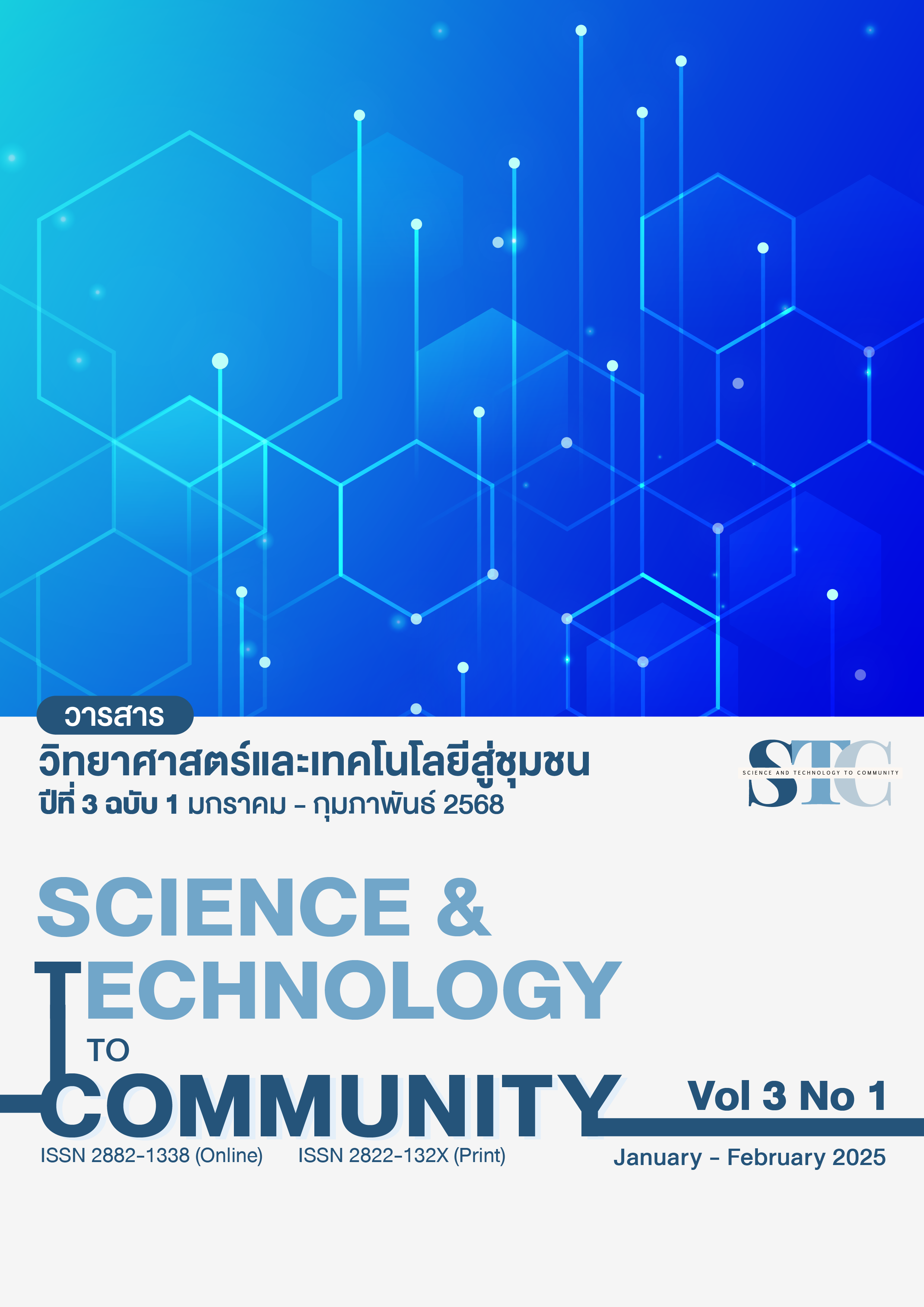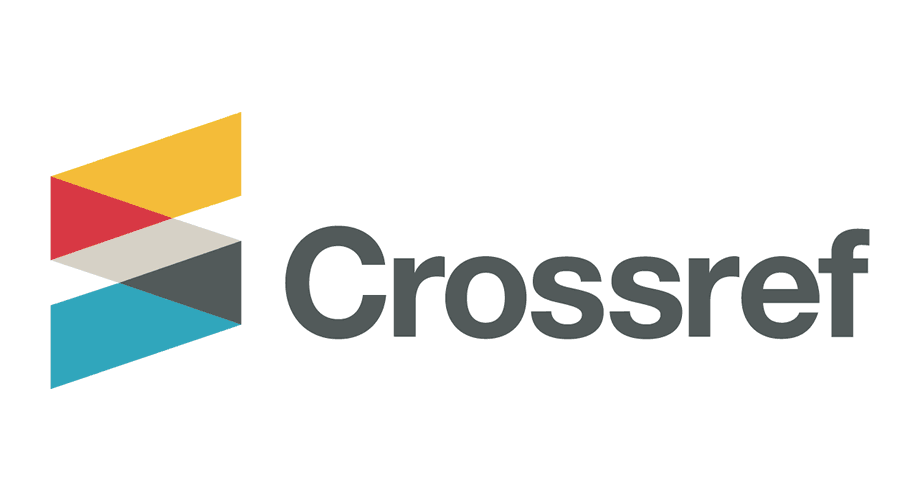การศึกษาความรู้ ความเชื่อมั่นในตนเอง และพฤติกรรมการบริโภคอาหารที่มีโซเดียมของกลุ่มชาติพันธุ์อาข่าในตำบลแม่ยาว อำเภอเมือง จังหวัดเชียงราย
DOI:
https://doi.org/10.57260/stc.2025.913คำสำคัญ:
ความรู้, ความเชื่อมั่นในตนเอง, พฤติกรรมการบริโภคอาหาร, กลุ่มชาติพันธุ์อาข่า, อาหารที่มีโซเดียมบทคัดย่อ
งานวิจัยครั้งนี้มีวัตถุประสงค์เพื่อศึกษาความรู้ ความเชื่อมั่นในตนเองและพฤติกรรมการบริโภคอาหารที่มีโซเดียมของกลุ่มชาติพันธุ์อาข่าในตำบลแม่ยาว อำเภอเมือง จังหวัดเชียงราย ใช้รูปแบบวิจัยเชิงพรรณนาแบบตัดขวาง และเป็นการวิจัยเชิงสำรวจชุมชน เก็บข้อมูลในกลุ่มชาติพันธุ์อาข่า จำนวน 211 คน เครื่องมือที่ใช้ในการวิจัยเป็นแบบสอบถาม 4 ส่วน ได้แก่ ข้อมูลส่วนบุคคล ความรู้เกี่ยวกับอาหารที่มีปริมาณโซเดียม พฤติกรรมการบริโภคอาหารที่มีโซเดียม และความเชื่อมั่นตนเองในการปรับเปลี่ยนพฤติกรรมการบริโภคโซเดียม วิเคราะห์ข้อมูลด้วยการแจกแจงความถี่ ร้อยละ ค่าเฉลี่ย ส่วนเบี่ยงเบนมาตรฐาน วิเคราะห์ความแปรปรวนทางเดียวเพื่อศึกษาความแตกต่างของปัจจัยส่วนบุคคลที่มีผลต่อความรู้ ความเชื่อมั่นตนเอง และพฤติกรรมการบริโภคโซเดียม และเปรียบเทียบค่าเฉลี่ยระหว่างกลุ่มตัวอย่างสองกลุ่มที่เป็นอิสระจากกัน โดยใช้การทดสอบความแตกต่างของค่าเฉลี่ย พร้อมทั้งวิเคราะห์ความมีนัยสำคัญทางสถิติที่ระดับ < 0.05 ผลการวิจัย พบว่า กลุ่มตัวอย่างส่วนใหญ่เป็นเพศหญิง อยู่ในช่วงอายุ 41-59 ปี น้ำหนัก 51-70 กิโลกรัม ส่วนสูง 151-170 เซนติเมตร ค่าดัชนีมวลกาย 18.50-22.90 กก./ม² ความดันโลหิตอยู่ในระดับดี การศึกษาสูงสุดในระดับประถมศึกษาและไม่มีโรคประจำตัว กลุ่มตัวอย่างมีระดับความรู้เกี่ยวกับอาหารที่มีปริมาณโซเดียม อยู่ในระดับปานกลาง (ร้อยละ 56.40) พฤติกรรมการบริโภคอาหารที่มีโซเดียม อยู่ในระดับปานกลาง (ร้อยละ 82.90) ความเชื่อมั่นตนเองในการปรับเปลี่ยนพฤติกรรมการบริโภคโซเดียม อยู่ในระดับปานกลาง (ร้อยละ 51.20) และเปรียบเทียบค่าเฉลี่ยระหว่างปัจจัยส่วนบุคคลกับ ความรู้ ความเชื่อมั่นตนเองและพฤติกรรมการบริโภคโซเดียมพบความแตกต่างอย่างมีนัยสำคัญทางสถิติ ทั้งนี้ผลการศึกษานี้สามารถนำไปใช้ในการพัฒนากิจกรรมส่งเสริมสุขภาพในชุมชน
Downloads
เอกสารอ้างอิง
กรมควบคุมโรค. (2559). ยุทธศาสตร์ลดการบริโภคเกลือและโซเดียมในประเทศไทย พ.ศ. 2559-2568. กรุงเทพมหานคร: สำนักงานกิจการโรงพิมพ์องค์การสงเคราะห์ทหารผ่านศึก ในพระบรมราชูปถัมภ์.
กองโรคติดต่อ กระทรวงสาธารณสุข. (2563). โรงพยาบาลเค็มน้อย แนวทางการดำเนินงาน อร่อย (3) ดี. กรุงเทพมหานคร: กรมควบคุมโรค.
กองโรคไม่ติดต่อ กรมควบคุมโรค. (2561). รายงานผลโครงการชุมชนลดเค็ม ลดโรคต้นแบบ. กรุงเทพมหานคร: กรมควบคุมโรค.
ไกรสิทธิ์ จามรจันทร์สาขา, อนันตา สุขวัฒน์, รุ่งโรจน์ ต้นประดิษฐ และ อาภิสรา พลนรัตน์. (2564). การเปลี่ยนแปลงเชิงสังคมวัฒนธรรมของชาวอาข่าดอยผาหมีจังหวัดเชียงรายในรอบปี. วารสารนิติศาสตร์ รัฐศาสตร์และสังคมศาสตร์ มหาวิทยาลัยราชภัฏเชียงราย, 5(2), 161-182. สืบค้นจาก https://so06.tci-thaijo.org/index.php/lawcrru/article/view/246341
ประทุม เมืองเป้ และ วุฒิชัย จริยา. (2566). ปัจจัยทำนายพฤติกรรมลดการบริโภคเกลือและโซเดียมของกลุ่มเสี่ยงโรคความดันโลหิตสูงอำเภอหนองไผ่ จังหวัดเพชรบูรณ์. วารสารวิชาการสาธารณสุข, 32(1), 1-10. สืบค้นจาก https://thaidj.org/index.php/JHS/article/download/13288/10861/23442
สกุณา กัณหาสุระ และ พรพิมล ชูพานิช. (2566). พฤติกรรมการบริโภคอาหารที่มีโซเดียมสูงและปัจจัยที่สัมพันธ์กับการบริโภคอาหารที่มีโซเดียมสูงของผู้ใหญ่ในอำเภอเมือง จังหวัดอุดรธานี. วารสารวิชาการสาธารณสุขชุมชน, 9(4), 1-15. สืบค้นจาก https://he02.tci-thaijo.org/index.php/ajcph/article/view/263890
สิทธิพงศ์ ยิ้มสวัสดิ์. (2566). ความชุกของการบริโภคโซเดียมสูงในประชากรจังหวัดแม่ฮ่องสอน ประเทศไทย. วารสารวิชาการสาธารณสุข, 32(3), 98-110. สืบค้นจาก https://thaidj.org/index.php/JHS/article/download/14220/11474/26344
สำนักพัฒนานวัตกรรมชุมชน. (2564). เรื่องเล่าจากชุมชน (2) ‘มหาวิทยาลัยชนเผ่าอาข่า’ สืบสานวัฒนธรรมประเพณี สร้างวิชา “สร้างความรู้ที่กินได้”. สืบค้นจาก https://web.codi.or.th/20210112-20703/
สำนักพัฒนานวัตกรรมชุมชน. (2566). ‘ครัวอ่าข่า’ อาหารปรับสมดุลร่างกาย ‘ดิน น้ำ ลม ไฟ’. สืบค้นจาก https://web.codi.or.th/index.php/20230203-42644/
อรทัย พรมแก้ว, มาลัยพร ล้วนศรี, รุ่งศิรินัตน์ ครองยุติ และ วรางคนา ใจสู้ศึก. (2565). การศึกษาความรู้ ความตระหนัก และพฤติกรรมการบริโภคอาหารที่มีโซเดียมของประชากรในหมู่บ้านแห่งหนึ่งในจังหวัดอุบลราชธานี. วารสารวิชาการ สคร., 28(1), 9-15. สืบค้นจาก https://he02.tci-thaijo.org/index.php/ODPC9/article/view/251355
อัมภากร หาญณรงค์, ชนัญชิดาดุษฎี ทูลศิริ และ สมสมัย รัตนกรีฑากุล. (2560). ปัจจัยที่มีอิทธิพลต่อพฤติกรรมการบริโภคอาหารของผู้ป่วยโรคความดันโลหิตสูง. วารสารคณะพยาบาลศาสตร์, 25(3), 52-63. สืบค้นจาก https://he02.tci-thaijo.org/index.php/Nubuu/article/view/101426
World Health Organization. (2021). Sodium reduction. Geneva: WHO.
ดาวน์โหลด
เผยแพร่แล้ว
รูปแบบการอ้างอิง
ฉบับ
ประเภทบทความ
สัญญาอนุญาต
ลิขสิทธิ์ (c) 2024 วารสารวิทยาศาสตร์และเทคโนโลยีสู่ชุมชน

อนุญาตภายใต้เงื่อนไข Creative Commons Attribution-NonCommercial-NoDerivatives 4.0 International License.
1. บทความ ข้อมูล เนื้อหา รูปภาพฯลฯ ที่ได้รับการตีพิมพ์ใน “วารสารวิทยาศาสตร์และเทคโนโลยีสู่ชุมชน” ถือเป็นลิขสิทธิ์ของวารสารวิทยาศาสตร์และเทคโนโลยีสู่ชุมชน มหาวิทยาลัยราชภัฏเชียงใหม่ หากบุคคลหรือหน่วยงานใดต้องการนำทั้งหมดหรือส่วนหนึ่งส่วนใดไปเผยแพร่ต่อหรือกระทำการใดๆ จะต้องได้รับอนุญาตเป็นลายลักษณ์อักษรจาก วารสารวิทยาศาสตร์และเทคโนโลยีสู่ชุมชน มหาวิทยาลัยราชภัฏเชียงใหม่
2. เนื้อหาบทความที่ปรากฏในวารสารเป็นความรับผิดชอบของผู้เขียนบทความโดยตรง ซึ่งกองบรรณาธิการวารสารไม่จำเป็นต้องเห็นด้วยหรือร่วมรับผิดชอบใดๆ














